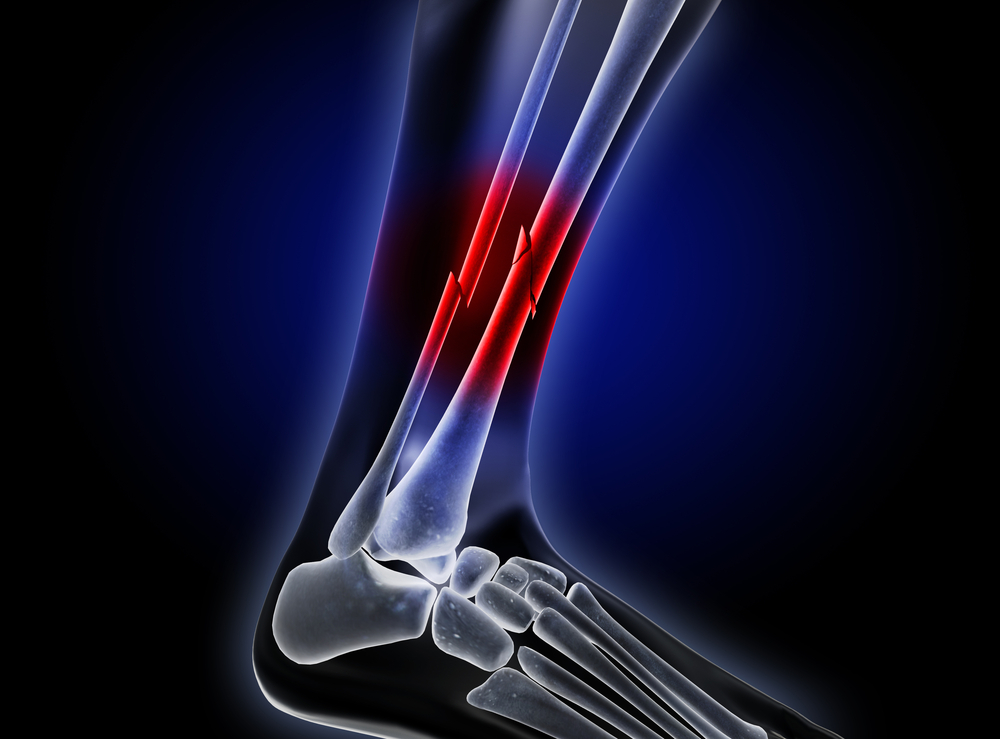 If you or a loved one has broken a leg in a car accident or another type of personal injury, contact us today for a free, friendly, confidential consultation. We are experienced Spokane personal injury lawyers who have been representing clients since 1948.
If you or a loved one has broken a leg in a car accident or another type of personal injury, contact us today for a free, friendly, confidential consultation. We are experienced Spokane personal injury lawyers who have been representing clients since 1948.
About your leg bones
Our skeletal system consists of 270 bones at birth, but many of those naturally fuse together as we grow. By the time we reach adulthood, we’re down to 206 bones. Each of our legs consists of four bones. From the hip down, those are the:
- Femur (thigh bone)
- Patella (kneecap)
- Tibia (shin)
- Fibula (shin)
Due to the length of three out of these four bones and the location of the kneecap, a fracture or fractures aren’t at all unusual.
Common causes of leg fractures
Trauma is the most common cause of a fractured leg. Due to reduced bone density, children and older adults are more prone to breaking a leg. These fractures are commonly caused by:
- Motor vehicle accidents
- Motorcycle crashes
- Bicycle and pedestrian accidents
- Slip and falls and trip and falls
- Sports and recreational accidents
Leg fracture symptoms
Although the first obvious symptom of a broken leg is the inability to walk, other symptoms can include:
- Swelling
- Bruising
- Intense pain
- Deformity
Another obvious sign of a broken leg is when the fracture is so severe, the bone instantly erupts through the skin. Immediate emergency treatment is required to prevent severe infection.
Leg fractures are classified into different types, and how a leg fracture is treated depends on its location and severity. Some types of leg fractures are:
- Open or compound fractures that protrude through the skin
- Closed fractures with no skin protrusion
- Incomplete fractures with a cracked bone
- Complete fractures with the bone in at least two parts
- Displaced fracture with unaligned fragments
Treating broken legs
At just about any emergency room, an uncomplicated leg fracture is going to be immobilized with splinting until such time as a medical decision is made on what to do with it. More serious fractures might require manipulation of the broken pieces into their proper positions before immobilization. Sometimes the splint might be left on the leg for a while until such time as swelling subsides. A cast would be put on the leg after the swelling goes down.
- Casting: Most leg fractures require immobilization in order to give the bone time to heal. Restriction of movement is critical. This is usually done with some type of a cast and keeping weight off of the broken leg. It requires the person to be on crutches for at least six weeks. Over-the-counter medication might be recommended for pain.
- Physical therapy and rehabilitation: Once a cast is removed, physical therapy or rehabilitation will probably be needed to reduce leg stiffness and increase range of motion in the mended leg. If the fracture was severe, therapy and rehabilitation might take a few months before maximum medical improvement is reached.
- Surgery: A cast and crutches heal most broken legs, but it’s not unusual for a person to undergo surgery to repair a severe fracture. Internal fixation devices like plates or screws are used for this purpose. Even rods might be implanted inside of a leg bone where the marrow is located. In a minority of surgical leg fractures, an external fixation device might be used. With external fixation, a frame on the outside of the leg might be used to hold pins in place that are attached to the bone.
Compensation and injury claims for leg injuries
Just about any broken leg can be debilitating for at least six weeks. Some people will experience the pain of a broken leg for the duration of their lives. Whatever the extent of the fracture, if it was caused by the carelessness and negligence of somebody else, the victim is likely entitled to compensation for damages like:
- Past and future medical bills
- Past and future lost earnings
- Any permanent disfigurement
- Any permanent disability
- Pain and suffering
- Loss of a normal life
Do I need a personal injury lawyer?
These damages can be financially devastating. We’re dedicated to the injured victims that we represent, and we provide individualized attention to their injury, worries and cases. Don’t trust the insurer of the person who caused your injuries. It only wants to pay as little compensation as possible or nothing at all to you. Our objective is to maximize your compensation. Contact us right away after any traumatic injury for a free consultation and case evaluation. We won’t even charge you a penny of legal fees until such time as we’ve obtained compensation for you.
Related resources:








